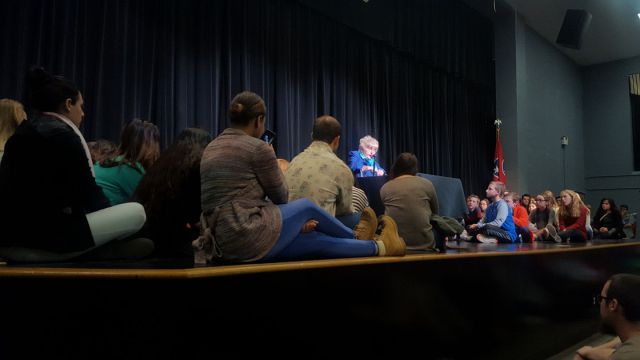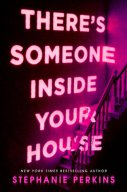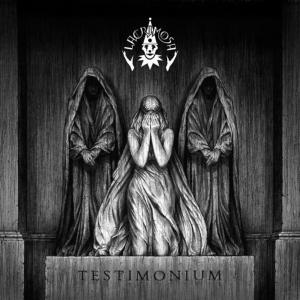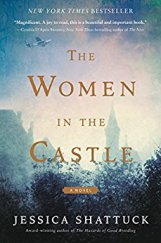In addition to Anne Frank, Number the Stars, and Night, the accounts of Eva Mozes Kor’s survival with her twin sister should also be covered during the curriculum of Holocaust Studies within schools. Surviving the Angel of Death: The Story of a Mengele Twin in Auschwitz is a short book, easy to read and strikingly vivid. In this YA memoir, Eva doesn’t hold back on her truth and experiences; Lisa also makes it easy for children — and those unfamiliar with the history of the Holocaust — to understand and feel empathy for Eva, her sister, her family, and other victims. Eva and her twin sister had very normal lives. They had plenty of friends, nice outfits (that always matched one another), and a very loving family.
This book doesn’t just chronicle Eva’s plight throughout persecution, survival, and life after the camps. It also answers the question of how people just stood by and let these things happen; it was ingrained in the media, in the school system, and society itself. Her memoir also greatly illustrates life after war and the camps. During Halloween one year, her children were pranked by popular kids at the school. Because there was nobody there to defend her and her sister when they were younger and being picked on for being Jewish, she had the power to go out and chase those kids away, to stop them from pranking her children. After that, the popular kids spread rumors that she was crazy and her children hated her for it. They asked her why she couldn’t be just like everyone else’s “normal” mother. She endured the taunting of her neighbors for several years until the 1978 TV series “Holocaust” began to air. Many of the children that had called her crazy apologized after watching the show, now that they understood her trauma.

Last night I had the privilege of attending a lecture by Eva Mozes Kor herself at a local school in Murfreesboro, TN. There were so many people at the event that the doorways and walkways of the auditorium were overflowing. The emergency exit doors to either side of the stage were opened to decrease the heat in the room and allow more standing space for guests. Teachers brought in chairs from other classrooms so some people would have the opportunity to sit, many sat on the floor and others stood around the perimter of the room and in the doorways of the emergency exit doors to the side of the stage.
After Eva Mozes Kor was introduced to the audience, the audience exploded in applause and everyone in the room got to their feet. Eva began speaking and told us that she would much rather have people sit if they could. She asked if it would be okay if she could invite people to come sit on the stage with her. It was such an incredible feeling. My heart was bursting and I wanted to cry. This woman who had defied the odds, who had survived the most evil and deadly events in human history, welcomed everyone with open arms and treated us all like we were her friends just having a conversation. She cracked jokes, introduced her iPhone app, and even told us about her first experiences with Twitter.
It is really hard to narrow down the most memorable moment of the night because the  night itself was so influential. If I had to choose one, though, I would be toward the end when she was talking about forgiveness. In 1993, she was invited to Boston to speak for one of her first times and she was told to bring along a Nazi doctor. “Where do you suppose I find one of those?” she asked the crowd. We all laughed. After that she began searching and actually found a man who had been a Nazi doctor; Dr. Hans Münch. He told her he would not speak in Boston, however he did invite her to his house in Germany. Eva spoke about how her nerves grew as the days inched closer to her encounter with Dr. Münch. After their interview with cameramen and the media was over, Eva invited him to come along with her to Auschwitz in 1995 for the 50th anniversary of liberation. She told us that she also asked him to sign an affidavit which consisted of Dr. Münch’s confession of signing the death certificates for those who died within the gas chambers as proof that they were real and that the Holocaust did happen. He agreed.
night itself was so influential. If I had to choose one, though, I would be toward the end when she was talking about forgiveness. In 1993, she was invited to Boston to speak for one of her first times and she was told to bring along a Nazi doctor. “Where do you suppose I find one of those?” she asked the crowd. We all laughed. After that she began searching and actually found a man who had been a Nazi doctor; Dr. Hans Münch. He told her he would not speak in Boston, however he did invite her to his house in Germany. Eva spoke about how her nerves grew as the days inched closer to her encounter with Dr. Münch. After their interview with cameramen and the media was over, Eva invited him to come along with her to Auschwitz in 1995 for the 50th anniversary of liberation. She told us that she also asked him to sign an affidavit which consisted of Dr. Münch’s confession of signing the death certificates for those who died within the gas chambers as proof that they were real and that the Holocaust did happen. He agreed.
Last year, I visited the CANDLES Holocaust Museum in Terre Haute, Indiana. Founded in 1984 by Eva and her twin sister Miriam, the museum contains several artifacts such as the Declaration of Amnesty and a striped prisoner uniform from Auschwitz. The center also has several informational videos and recordings that go into depth of the reality of the Holocaust during World War II. Even being in the museum, you could feel the heaviness of what Eva and many people like her went through.
The CANDLES museum also has a website if you’re interested in more information. If you are an educator, there is also a teacher’s guide to her memoir for free downloading. You can also view and read the Declaration of Amnesty, Eva Kor’s definition of forgiveness, her relationship with Dr. Munch, and so much more. Click here to visit the CANDLES webpage.
As a former undergraduate who studied the Jewish Culture and the Holocaust for her minor in college, I highly encourage you to read this book. It’s a quick read and only about 140 pages. It will make you think, make you feel, and make your life a better one. One thing Eva Kor emphasized last night at her lecture was that everyone should strive to be their best self and make the world a better place every day. She encouraged children to go sit with the lonely kid sitting by themselves at lunch time, not because someone would see them do it, but because it will make your heart feel good and it will make that person feel loved.
Advertisements Share this:




